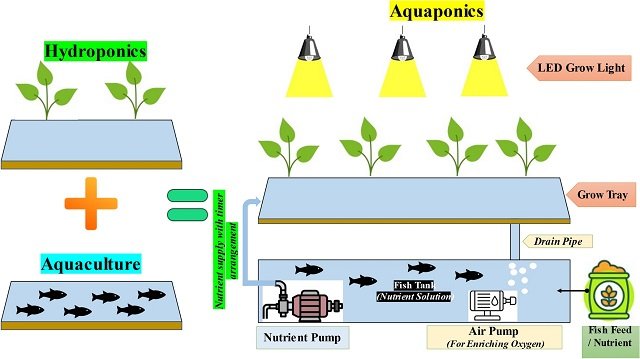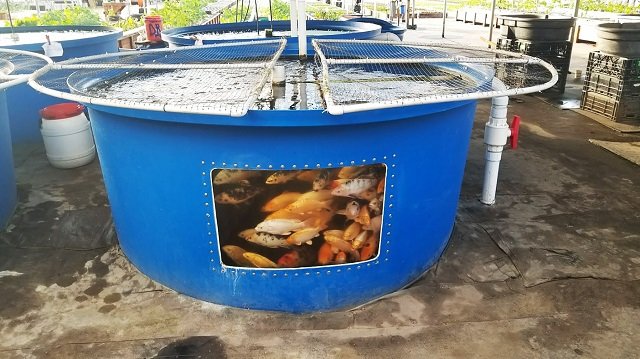Ames, USA.- Aquaponics, a union of hydroponics and aquaculture, provides a fast, efficient method of producing both plant and fish crops. Aquaponics systems use fish waste that is broken down by bacteria and turned into nutrients to grow plants. These systems allow fresh produce to be grown indoors throughout the year.
How an aquaponics system works is the focus of a new publication titled “An Overview of Aquaponic Systems: Hydroponic Components,” written by Allen Pattillo, fisheries and aquaponics specialist with Iowa State University Extension and Outreach. The publication was commissioned by the North Central Region Aquaculture Center.
Advantages of aquaponics
“Aquaponics is scalable to whatever size is necessary, from the hobbyist to commercial production,” said Pattillo. “Aquaponics provides access to both animal protein and fresh produce throughout the year while also being environmentally sustainable.”
Aquaponic systems allow for plants to grow by breaking down fish waste into nutrients that are then returned to the plants.
“The fish waste that is generated is broken down by beneficial bacteria, with all of those mineralized nutrients moving into the water column which then feed the growing produce,” Pattillo said.
Designing an aquaponics system
Stay Always Informed
Join our communities to instantly receive the most important news, reports, and analysis from the aquaculture industry.
The publication provides information on design of an aquaponics system, using the system developed at Iowa State University as a guide. Each component of the system is shown and explained, providing information on its function and purpose.
“The system that was built at Iowa State was constructed with materials that were readily available,” Pattillo said. “An aquaponics system is something that can be customized to fit individual needs. We are moving toward a point where we are figuring out the optimized conditions we want for a working system. It has been a bit of trial and error as we look for exactly what makes the system run most efficiently.”
There are also several different ways to grow plants. They can be configured in rows like in a garden or can be grown vertically.
“The publication covers the five major methods of hydroponic production that can be incorporated into aquaponics,” Pattillo said. “Two of these seem to be more optimized; deep water culture is probably the easiest to use and the flood and drain method also works very well.”
Reference (open):
D. Allen Pattillo. 2017. An Overview of Aquaponic Systems: Hydroponic Components. NCRAC TBS 123
https://store.extension.iastate.edu/Product/15111
Source: ISU
Editor at the digital magazine AquaHoy. He holds a degree in Aquaculture Biology from the National University of Santa (UNS) and a Master’s degree in Science and Innovation Management from the Polytechnic University of Valencia, with postgraduate diplomas in Business Innovation and Innovation Management. He possesses extensive experience in the aquaculture and fisheries sector, having led the Fisheries Innovation Unit of the National Program for Innovation in Fisheries and Aquaculture (PNIPA). He has served as a senior consultant in technology watch, an innovation project formulator and advisor, and a lecturer at UNS. He is a member of the Peruvian College of Biologists and was recognized by the World Aquaculture Society (WAS) in 2016 for his contribution to aquaculture.




